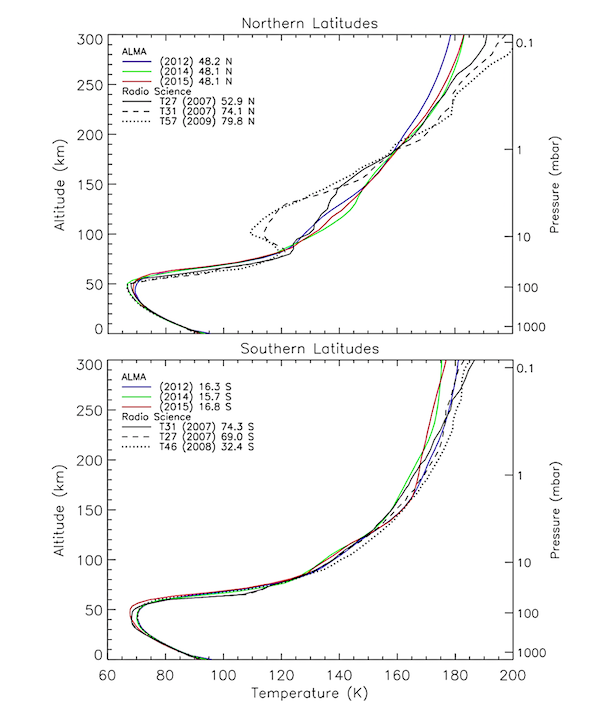science highlights 1000 alma paper
|
|
The 1000th peer-reviewed paper using ALMA dataThe 1000th ALMA paper, by Alexander E. Thelen and collaborators, presents a detailed investigation of the atmospheric temperature of Saturn's largest moon, Titan. They employ four datasets from the ALMA Science Archive from 2012, 2013, 2014 and 2015 that contain strong CO rotational transitions and were taken at high spatial resolution to extract spectra from three separate regions on Titan's disk. The CO emission lines provide excellent probes of atmospheric temperature due to the molecule’s long chemical lifetime and stable, well constrained volume mixing ratio. The images on the left show a comparison of spatial ALMA retrievals from 2012 (blue lines), 2014 (green), and 2015 (red) to radio occultation results at northern (top) and southern (bottom) latitudes (black lines). Radio science measurements were not convolved with ALMA beam-footprints to show seasonal variations in the lower atmosphere from 2007–2015, particularly above 100 km. ALMA’s excellent sensitivity in the lower stratosphere (60–300 km) provides a highly complementary dataset to contemporary CIRS and radio science observations, including altitude regions where both of those measurement sets contain large uncertainties. The demonstrated utility of CO emission lines in the submillimeter as a tracer of Titan’s atmospheric temperature lays the groundwork for future studies of other molecular species – particularly those that exhibit strong polar abundance enhancements or are pressure-broadened in the lower atmosphere, as temperature profiles are found to consistently vary with latitude in all three years by up to 15 K. The paper makes use of the following ALMA data: ADS/JAO.ALMA2012.1.00317.S, 2012.1.00688.S, 2011.0.00724.S, and 2012.1.00501.S.
|

